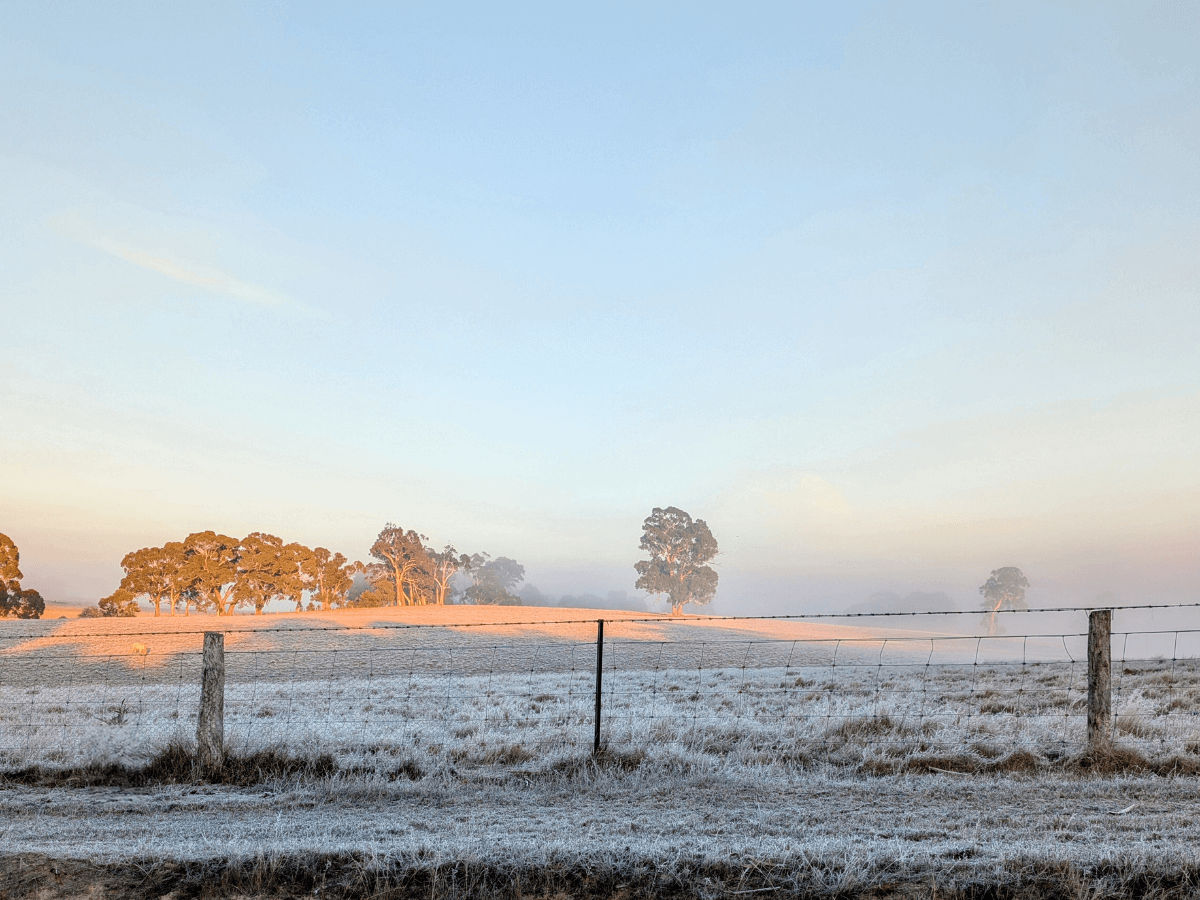The Winter Solstice has arrived in Australia. The longest night. The turning point before the light returns.
I’ve never quite found my footing with the Wheel of the Year here. My bones remember northern seasons—bonfires in October, Beltane blossoms in May, the sun’s height in June. But I’ve lived in Australia long enough to recognise the distinct rhythm of the land beneath me. This place has its own pulse, its own wisdom.
This winter, I find myself craving stillness. Not just quiet but a sacred kind of pause that doesn’t ask for action or achievement. One that simply is. I’ve just finished four months of Clinical Pastoral Education, a busy, intense period, and now I’m in that liminal space of figuring out what comes next—reflecting, planning, getting organised. So yes, stillness, but there’s a stirring beneath the surface, a looking forward to what’s coming. I can feel some excitement, like the pause between breaths before something new begins.
The cold truth about Australian winter
It’s cold—very cold. This year is the first time I’ve noticed Melburnians openly admitting it’s cold. When I first arrived in Australia in 2012, I was stunned not just by the outdoor chill but by the cold inside people’s homes, on public transportation, and in public spaces. People shrugged and said, “You’ll get used to it.” More than a decade later, I haven’t. I leave the house wearing about six layers and am still cold.
This season, one of my small delights has been watching videos of Canadians and Scandinavians marvelling at how cold Australia feels. Our houses are poorly insulated, our windows aren’t double-glazed, and the lounge room heater often does little more than warm your shins—if it’s even turned on, given the energy cost. My favourite comment: “Australians didn’t know whether to build for summer or winter, so they did neither.”
Instead, we invented the Oodie. I don’t have one yet, but I did get some fuzzy polyester pants. They’re warm and cosy—I just can’t get too close to the heater.
Listening to the land's rhythms
It took me a long time to realise that autumn doesn’t exist here, not how I once knew it. Of course, there’s a transition between summer and winter—a shift in light, a drop in temperature. However, the environmental cues that define the classic European four-season model don’t fully apply to this land. Most native trees are evergreen. The ones that put on a fiery autumn show of reds, oranges, and golds are almost entirely introduced species from the northern hemisphere.
That’s not just a charming difference. It’s the legacy of colonisation—a European template imposed onto a continent with its own deep, relational understandings of time and change. Aboriginal and Torres Strait Islander peoples have long lived in alignment with local and regional seasonal cycles. Some knowledge systems speak of five, six, or more seasons marked not just by temperature but by winds, rainfall, flowering plants, and animal behaviours.
The four-season calendar doesn’t fit this land. For those of us whose spirituality is rooted in seasonal cycles, living in the southern hemisphere can feel like being out of sync twice: first with the northern traditions many of us inherited, and then with the land beneath us, whose rhythms we were never taught to hear.
But that could be part of the invitation: to notice what we’ve inherited, to question what we’ve assumed, and to begin listening, not for perfection or purity but for resonance. Not to recreate ancient traditions in new soil, but to form a relationship with the place we live as it is.
The brilliant light
The Winter Solstice is a hinge point. At its lowest, the sun turns toward the light again, not with speed or fanfare but with a steady shift. Here in Melbourne, winter reveals its own character. Yes, it’s still dark outside when I wake at 6 a.m., and the sun sets around 5 p.m. But the days are often glorious—cold, bitterly cold, but frequently blessed with brilliant sunshine and impossibly blue winter skies.
Some days are grey and drizzly, but many are crisp and bright. The winter rains nourish the evergreen landscape, keeping it lush and alive rather than the bare, dormant scenes of northern hemisphere winters. There’s something unexpectedly hopeful about this—how the land stays green and breathing even in its quietest season, though “quiet” isn’t quite right either. The birds are busy, fungi are blooming, and wombats are active. Winter here isn’t so dormant or dark.
I’m not planning a significant ritual this Yule. No feast, no fire, no elaborate spellwork. Just a few candles. Some time with the dog. A hot drink. A bit of journaling. Perhaps a prayer whispered to Yemaya, who has been so present this month. She, too, understands the depths, the ebb, the flow, the pause between tides.
You’re not alone if you’re feeling the weight of the world or the tiredness that midwinter can bring. This doesn’t have to be the time for pushing or forcing. This can be the time for breathing. For bundling up. For noticing what’s stirring around you—the birds, the fungi, the subtle shifts in the land.
You don’t need to do anything to meet the solstice. You can simply be. Let the sun rest. Let your soul rest. Let the Earth teach you how.
The wheel turns, even when we’re still.
Blessed winter solstice.

